What is a smart home: the principle of operation and device + creating a project and assembly tips
Numerous engineering systems, united by the common name "Smart Home", provide users with a high level of comfort, safety. But there are hundreds of varieties of options for such equipment, and solving radically different tasks.
Let's try to understand all the intricacies together and understand what a smart home is, and then move on to practical steps to improve the comfort of living. Since expensive components do not leave room for errors.
The content of the article:
What is such a system?
Any set of electronics made for a smart home is a high-tech equipment. Intended for automated and, most often, centralized control, flexible, precise control of the activity of communication systems of an apartment, a house.
Key features of a smart home
Intelligent command blocks of a smart home are able to create the optimal microclimate in an apartment, a house.
Moreover, to solve this problem, all heating devices, air conditioners, split systems, filters, ozonizers and other similar products are controlled.
The essence of the process is as follows: control centers equipped with processors receive the results of measurements of the chemical composition of air, its temperature, humidity and give signals to the necessary structural elements.
So, if the premises need to be cooled, then a command is sent to turn on the air conditioner, and at the same time all heating equipment is turned off, if this worked. That is, the command blocks of the systems also provide coherence to all the processes that are running.
Read more about how the climate control system works and the features of its choice. Further.
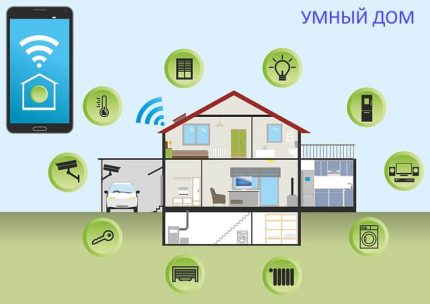
In general, the “Smart House” in an advanced configuration is capable of simultaneously controlling several hundred devices related to systems:
- lighting, both internal and external;
- emergency power supplies, which can be either batteries or generators;
- energy control;
- heatingair cooling;
- heating of individual elements of the building (storm sewer, steps);
- water supply;
- sewers;
- filtering;
- definition of emergency situations (gas, water leaks, problems in the power supply network);
- monitoring.
It can also control the alarm, surveillance cameras and many other equipment, including even curtains, windows, televisions, audio, video equipment, located throughout the apartment, at home.
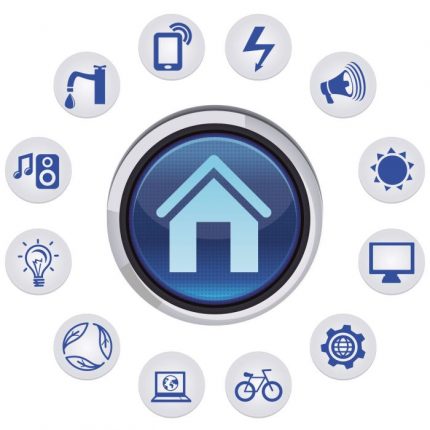
The processes themselves are both in demand and rare, one-time, for example, the former can include the control of temperature, brightness of lighting and many others.
The second category includes setting individual flows of warm or cold air. For example, those who are able to warm their feet to users watching TV shows on winter evenings.
A feature of modern smart home systems is that with their help it is possible to set different modes from each other in all rooms of the apartment, at home. For example, the temperature in the nursery can be the highest, and in the corridor the lowest, since it practically does not need heating.
At the same time, in the bathroom, the system can regularly deal with high humidity, while in the kitchen with air pollution.
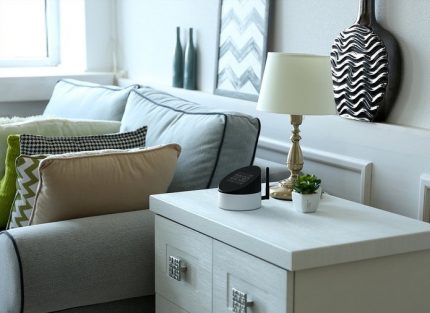
Integrated systems capable of managing all important processes are considered the most effective.
But the signs of a smart home are also possessed by simple sets of equipment that perform only one function. For example, this includes a processor that controls the on / off of a heater installed in the country.
Installed in the mains Dimmer, regulating the brightness of the lamps, and at the same time reducing energy consumption, also applies to intelligent equipment.
How does the system work and structure?
Let's try to figure out how the smart home system that is in demand today works and what it is. The basis of any set of intelligent equipment is a processor, which is a fairly powerful and modern computer.
Efficiency is provided by software with dozens, or even hundreds of preset modes, which are among the most popular.
As a result, in many cases, users will just have to enter the necessary parameters, for example, temperature, etc. and activate the desired program.
Further, the control unit will monitor by comparing the actual values with the programmed ones. All necessary information comes from the internal controls of the equipment included in the system, controllers, sensors, which are installed in each room.
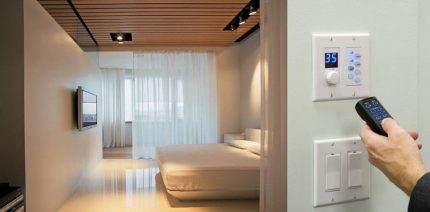
If the data received in real time does not correspond to the set, then the control unit gives the appropriate commands to make adjustments. And all of them provide the equipment coordinated work.
That is, to increase the temperature in the desired room, the air conditioner first turns off and only then does the heating equipment turn on. This saves up to 40% of electricity, and also eliminates dangerous critical load on the network.
Varieties of smart home
Manufacturers take into account the needs of different categories of users, as a result, the market is saturated with different types of intelligent equipment.
So it happens:
- wired;
- wireless.
In the first case, the command unit, actuating sensors, servomotors, controllers and other structural elements are interconnected by wires.
The advantage of this method is the high correctness of the execution of commands. This means that there is practically no chance of overloading the transmission bus with a large number of signals. In addition, fiber optic wires provide a high recall rate.
The most important drawback is the complexity of installation, since you have to lay and hide a large number of wires from the eyes.
This also leads to significant additional costs for the necessary building materials, so the best time to install wired systems is to perform repairs on the premises.
And also laying wires is time-consuming, so quite a lot of time is spent on such a procedure.
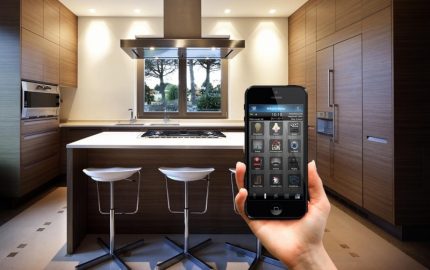
Wireless varieties of equipment are distinguished by the fact that communication between structural elements is carried out using radio signals, for which appropriate communications are used.
An important advantage of this type of equipment is the ease of installation. During which there is no need to change the design of the premises, to spend money on building materials, which makes installation an easy and quick procedure.
The main disadvantage of wireless systems is the method of communication between the components. Since radio signals significantly limit their functionality, in addition, quite often you will have to replace the batteries, which is inconvenient and is a regular expense item.
Another classification of Smart Home systems by type of control - this can be a centralized or decentralized option.
Although centralization of control is one of the most important advantages of any set of such equipment and in most cases it belongs to this particular variety, decentralized systems also have the right to life.
The reason is that this method makes it possible to level the consequences of the failure of any individual component of a smart home.
Also, the use of subsystems with various control units can improve the reliability of key functions.
For example, if the owner of the premises wants to reliably protect him from unauthorized entry, then using two decentralized systems is a more practical solution than one centralized one.
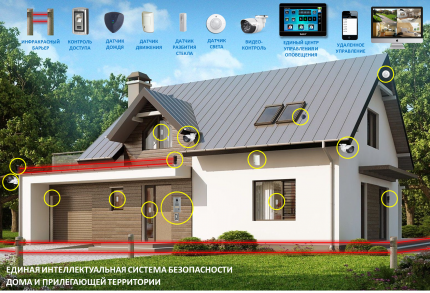
The main disadvantage of using several smart home systems at the same time is the difficulty in setting up, adjusting.
This happens because the number of components increases - each decentralized system has a separate processor, which often introduces confusion when they interact or control the user. And also this feature leads to a rise in the cost of a set of equipment.
As a result, decentralized systems are recommended to be used only in individual cases when the advantages clearly prevail over the negative aspects.
An important feature is the division by types of protocols, which are:
- open
- closed.
The first category includes systems that are controlled by the language used by various manufacturers.
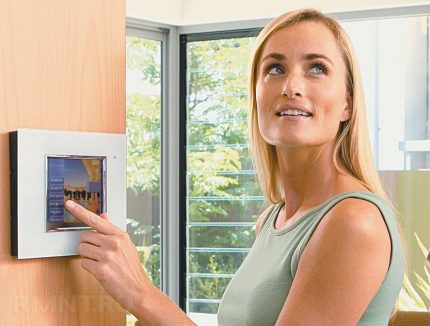
Closed systems are those that are controlled in a language created and used by only one manufacturer, which makes it possible to include only components designed and manufactured by him in the kit.
That reduces functionality, versatility, but provides a high degree of compatibility of devices, devices.
Intelligent Management System Diagram
Any set of equipment for a smart home is similar to a designer, from which you can create anything you want.
Therefore, it is unlikely that a user who wants to collect any kind of it at home will find a suitable scheme for his living conditions. For example, the standard option for a 3-room apartment or for a house of a certain area and number of storeys.

You will have to draw up the necessary scheme yourself or with the help of specialists. Exceptions may be the simplest versions of a smart home or decentralized systems, which also do not differ in complexity.
An example can be a diagram of installing a dimmer in the mains and working with it in pairs motion sensor, since it is standard, therefore the same in all cases.
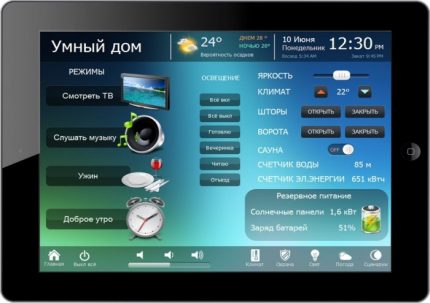
But even in this and similar cases, it is recommended to contact specialists. The reason is that all systems are powered by electricity and some gross errors can lead to fires, electric shock, breakdown of expensive structural elements.
Self-assembly recommendations
Since the cost of intelligent systems is expensive, and their installation will bring additional costs, and considerable (up to 50% of the cost of a set of equipment), their self-installation will help to save significantly.
And this work is also a pleasure, so assembling a smart home with your own hands, starting with creating a project, can be considered as a hobby.
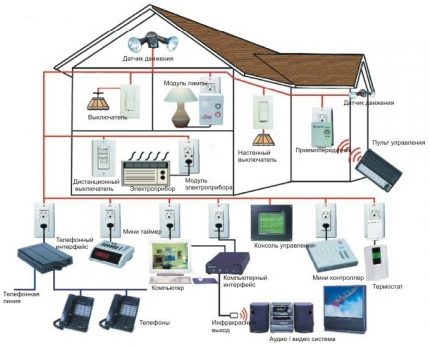
But it should be understood that not every interested user is able to carry out their own installation of such a system - for this you need to have a whole set of knowledge and skills.
Which include:
- Ability to work with electrical appliances. Moreover, in this area you need to have wide knowledge, for example, such basic knowledge as the skills of reliable connection of structural elements and cable to each other. It will also require skill in assembling electrical panels, understanding the principles of controlling modern electrical appliances, and others like that. Knowledge of safety regulations is also required.
- Programming skills and for various operating systems. They are needed, since each time you install the intelligent system, you will have to create a graphical interface with which you can manage later.
- Knowledge of the principles of building modern automation systems. That is, you must at least understand the types of controllers, their inputs / outputs, understand what sensors and other equipment are allowed to be used with them, etc.
- Understanding the algorithms of the system in general and all its individual parts.
If all of the listed knowledge and skills are available, then it is necessary to proceed to the preparatory procedures. To begin with, it is important to identify the tasks that a set of equipment should solve.
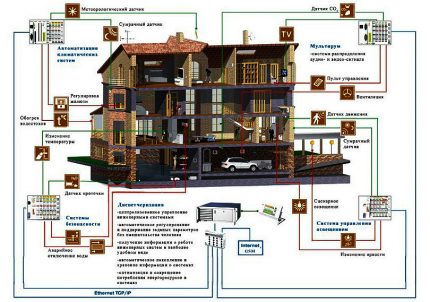
Then you need to figure out whether it is possible to implement it technically - whether it will withstand the power grid, whether the characteristics of the components are sufficient. In addition, housing should be examined to identify installation sites. And also you need to understand whether there is enough money to buy.
And after that, you can begin to create a working draft of the future system.
If the inspection of the premises in order to identify the optimal places for installing individual parts of the kit for a smart home can still be done by yourself, without the skills and experience in such matters, then the development of the project should be undertaken only with knowledge of the matter.
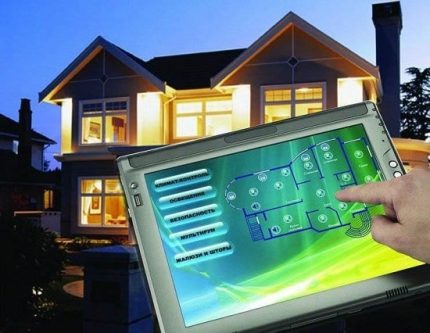
Even if there are plenty of practical skills and knowledge, it is recommended to start acquaintance with intelligent systems with the simplest options.
That is, you should purchase a kit, which includes a controller, a set of sensors and other equipment that allows you to solve any one important problem.
For example, to control the occurrence of water leakage, to carry out video surveillance or to regulate the brightness of the light. And then thoroughly deal with all the features.
The described approach will allow you to gain practical experience, find qualified specialists who can provide effective assistance and, in addition, avoid significant financial losses, even if interest in the smart system disappears or something does not go according to plan.
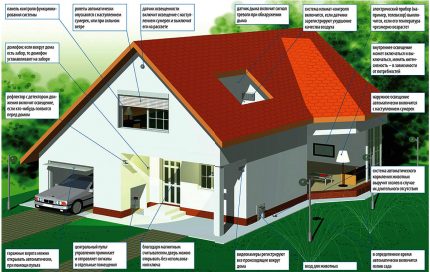
Even for the first independent attempt to assemble an intelligent system, it is advisable to purchase equipment that is controlled by Beckhoff, Siemens, Aries, and others like that. Since they are freely programmable, easy to use and suitable for various tasks.
If, together with any of the listed controllers, you use a special set of software designed to control the system from a computer equipped with Windows, a tablet, a smartphone with iOS, Android, you will be able to easily change scripts.
And also quickly transform the interface, remove unnecessary and add new structural elements.
Moreover, all of the above can be performed independently by each user, even with basic programming skills. An example of management software is Easy Home, which can work with all of the popular operating systems listed above.
Conclusions and useful video on the topic
The first video will provide an opportunity to deal with the capabilities of a smart home, how and how to complete such simple systems and how you can do it yourself.
The following video is also devoted to the installation of intelligent systems with your own hands.
Modern intelligent automation can not only increase comfort, but also improve the standard of living of all the inhabitants of the house. But for this you need to understand the principle of the smart home.
Otherwise, the owner will find not just disappointment, but also significant financial losses. Since functional kits cost a lot of money.
Still have questions about the topic of the article? Or can you supplement our material with valuable information about the principles of functioning of the Smart Home system? Please leave your comments, share your experience in the block below.

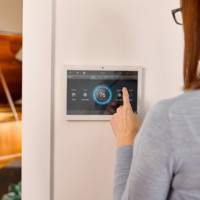 Heating in a smart home: device and principle of operation + tips for organizing a smart system
Heating in a smart home: device and principle of operation + tips for organizing a smart system  The Smart Home system for a country house: advanced devices for automatic control
The Smart Home system for a country house: advanced devices for automatic control 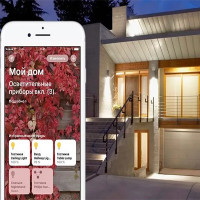 Apple smart home: the intricacies of organizing home control systems from the apple company
Apple smart home: the intricacies of organizing home control systems from the apple company 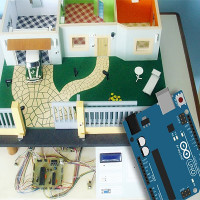 Smart home based on Arduino controllers: design and organization of controlled space
Smart home based on Arduino controllers: design and organization of controlled space 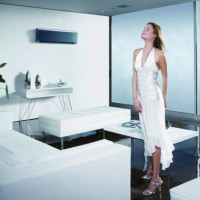 Climate control for home and apartment: device and system advantages + subtleties of choice and installation
Climate control for home and apartment: device and system advantages + subtleties of choice and installation  Xiaomi smart home: design features, an overview of the main components and working components
Xiaomi smart home: design features, an overview of the main components and working components  How much does it cost to connect gas to a private house: the price of organizing gas supply
How much does it cost to connect gas to a private house: the price of organizing gas supply  The best washing machines with dryer: model rating and customer tips
The best washing machines with dryer: model rating and customer tips  What is the color temperature of light and the nuances of choosing the temperature of the lamps to suit your needs
What is the color temperature of light and the nuances of choosing the temperature of the lamps to suit your needs  Replacement of a geyser in an apartment: replacement paperwork + basic norms and requirements
Replacement of a geyser in an apartment: replacement paperwork + basic norms and requirements
When I see information about the “smart home”, I always remember with laughter a video on this topic. The plot is simple: a girl comes home after a dentist and cannot open the door, since the system does not recognize her face or voice. It begins to rain and thunderstorm, and she, poor, stands in the yard all wet and swears with powerlessness. I mean that in our realities you can not trust electronics to 100%. Such a "smart home" has a lot of minuses that are not visible at first glance.
I do not like the idea of making a smart home, but I would like to introduce some elements at home. For example, the ability to eliminate gas leaks. That is, the ability to remotely shut off the valve. Still - disconnecting outlets at the moment. This is very convenient when there are small children in the house. Well, a sensor that turns on the light when people appear on this site. And all the other ideas, as for me, it makes no sense to implement.
Before deciding to buy a smart home or install equipment that allows you to automatically adjust the basic parameters of utility systems. Think about payback periods and maintenance of such a home. You will most likely have to become an engineer yourself in order for your smart home to work as intended.